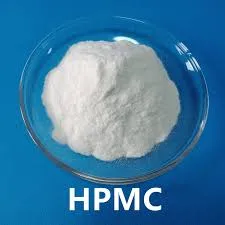
අගෝ. . 04, 2024 02:36 Back to list
Exploring the Solubility Characteristics of Hydroxyethyl Cellulose in Various Solvent Systems
Exploring the Solubility of Hydroxyethyl Cellulose An Overview
Hydroxyethyl cellulose (HEC) is a non-ionic, water-soluble polymer derived from cellulose, widely used across various industries, including pharmaceuticals, cosmetics, food, and construction. Its unique properties, such as thickening, stabilizing, and film-forming abilities, make it an essential ingredient in many formulations. Understanding the solubility of HEC is crucial for optimizing its performance and application in these fields.
Chemical Structure and Properties
Hydroxyethyl cellulose is produced by the reaction of ethylene oxide with cellulose, resulting in a polymer with hydroxyethyl groups attached to the glucose units of the cellulose chain. This modification enhances its solubility in water compared to unmodified cellulose, allowing it to dissolve readily to form viscous solutions or gels. The degree of substitution, which refers to the average number of hydroxyethyl groups substituted per glucose unit, significantly influences HEC's solubility and viscosity.
Factors Affecting Solubility
The solubility of hydroxyethyl cellulose is influenced by several factors
1. Molecular Weight HEC is available in various molecular weights, typically ranging from low to high. Lower molecular weight HEC variants tend to dissolve more easily and rapidly in water, while higher molecular weight versions may require more time and energy to achieve full solubilization.
2. Temperature The temperature of the solvent (typically water) plays a significant role in the solubility of HEC. Generally, higher temperatures increase the solubility, as the kinetic energy of the molecules facilitates the breaking of intermolecular bonds and enhances polymer dispersion.
hydroxyethyl cellulose solubility

3. pH Level The pH of the solution can also impact the solubility of HEC. Although HEC is less sensitive to pH compared to other polymers, extreme acidic or alkaline conditions can affect its properties and, consequently, its solubility.
4. Concentration The concentration of HEC in the solvent is another critical factor. At lower concentrations, HEC dissolves easily, leading to a clear solution. However, as concentration increases, the solution can become increasingly viscous or even gel-like, complicating the dissolution process.
5. Ionic Strength The presence of salts and other ionic compounds in the solution can alter the solubility of HEC. High ionic strength can screen the interactions between polymer chains, sometimes enhancing solubilization. Conversely, the presence of certain ions may lead to precipitation or aggregation of the polymer.
Applications and Practical Considerations
In practical applications, the control of solubility is vital for achieving desired viscosity and texture in formulations. In the pharmaceutical industry, for instance, HEC's solubility profile can affect drug release rates in hydrogels and tablets. In cosmetics, it contributes to the texture and feel of lotions and creams. In construction, HEC is used as a thickening agent in coatings, adhesives, and cement mixtures, where its solubility impacts workability and application properties.
When formulating with hydroxyethyl cellulose, it is essential to consider these factors to ensure optimal performance. Manufacturers often conduct solubility tests to determine the best conditions for dissolving HEC according to their specific application needs.
Conclusion
Hydroxyethyl cellulose is a versatile and valuable polymer, with its solubility playing a fundamental role in its efficacy across various applications. By understanding the factors influencing solubility—such as molecular weight, temperature, pH, concentration, and ionic strength—formulators can better harness the unique properties of HEC to create effective products in pharmaceuticals, cosmetics, food, and beyond. As research continues to evolve, the potential for innovative uses of hydroxyethyl cellulose remains vast, paving the way for enhanced formulations and applications in numerous fields.
-
Versatile Hpmc Uses in Different Industries
NewsJun.19,2025
-
Redispersible Powder's Role in Enhancing Durability of Construction Products
NewsJun.19,2025
-
Hydroxyethyl Cellulose Applications Driving Green Industrial Processes
NewsJun.19,2025
-
Exploring Different Redispersible Polymer Powder
NewsJun.19,2025
-
Choosing the Right Mortar Bonding Agent
NewsJun.19,2025
-
Applications and Significance of China Hpmc in Modern Industries
NewsJun.19,2025







